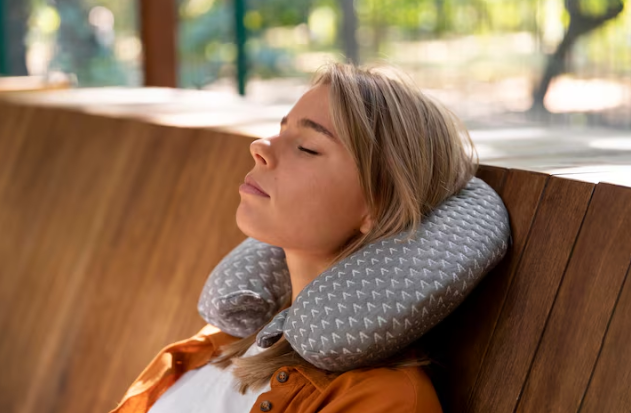“Blowing a Conch Shell” — An Ancient Breathing Practice That May Reduce Snoring and Sleep Apnea
Snoring and obstructive sleep apnea (OSA) affect millions worldwide, often leading to poor sleep quality, daytime fatigue, and increased risk of cardiovascular disease. A recent study suggests that a traditional breathing exercise — Shankh blowing, or blowing into a conch shell — may significantly reduce snoring and improve sleep quality within six months.

📌 What Is Shankh Blowing?
Originating in ancient India, Shankh means “conch shell” in Sanskrit. Used in Hindu, Buddhist, and Jain rituals, the practice involves inhaling deeply, then exhaling forcefully through pursed lips into a conch shell, producing a loud, sustained sound. This technique is believed to enhance lung capacity, strengthen the throat and respiratory muscles, and promote better airway control.
💡 The Study: How It Was Conducted
The research, published in the European Heart Journal Open Research, was led by Dr. Krishna K. Sharma and his team at Eternal Heart Care Centre & Research Institute in Jaipur, India. The study involved 30 adults aged 19–65 with moderate OSA, randomly assigned to either:
- Shankh Blowing Group (16 participants)
- Deep Breathing Exercise Group (14 participants)
Participants practiced their assigned breathing method for at least 15 minutes a day, five days a week, over a six-month period.
📊 Results After Six Months
The results were striking. Compared to the deep breathing group, the Shankh blowing group experienced:
- 34% reduction in daytime sleepiness
- Improved sleep quality scores
- Average of 4–5 fewer apnea episodes per hour during sleep
- Increased nighttime blood oxygen saturation
Dr. Sharma explained that the forceful exhalation and vibration generated while blowing the conch strengthen upper airway muscles, such as the pharynx and soft palate, reducing the likelihood of airway collapse during sleep. The spiral structure of the conch may also provide unique acoustic and mechanical stimulation that enhances muscle tone.
⚠️ Why This Matters for Sleep Apnea Patients
While the gold standard treatment for OSA remains CPAP (Continuous Positive Airway Pressure) therapy, many patients struggle with its cost, maintenance, and discomfort. Shankh blowing offers a low-cost, non-invasive alternative that could complement or, in some cases, replace CPAP therapy for certain patients.
Experts warn, however, that more large-scale clinical trials are needed before it can be formally recommended as a primary treatment.
✅ Expert Opinions
Professor Sofia Siza of the University of Crete, who was not involved in the study, emphasized the potential impact: “OSA increases the risk of high blood pressure, stroke, and heart disease. This study shows promising results for muscle-training-based therapies, but we need broader trials to confirm these findings.”
📌 Conclusion
Shankh blowing could offer a simple, affordable, and accessible method to improve airway strength and reduce OSA symptoms. While not a replacement for proven medical treatments, it may serve as an effective complementary therapy for patients seeking alternatives to CPAP. Large-scale, multi-center research is underway to further investigate its impact on airway muscle tone, oxygen saturation, and sleep architecture.
Learn more about Sleep Apnea Management at the Sleep Foundation




